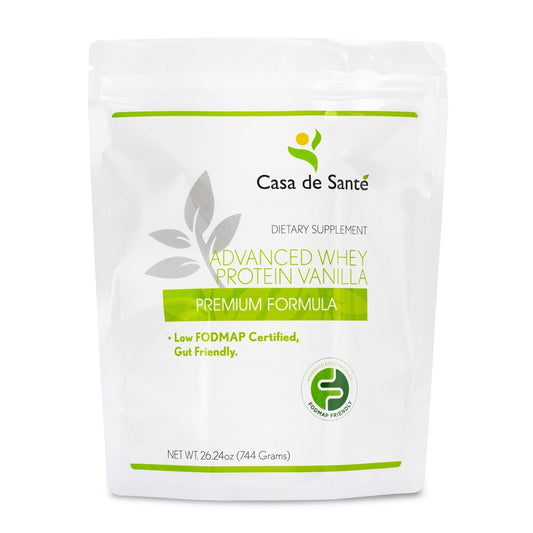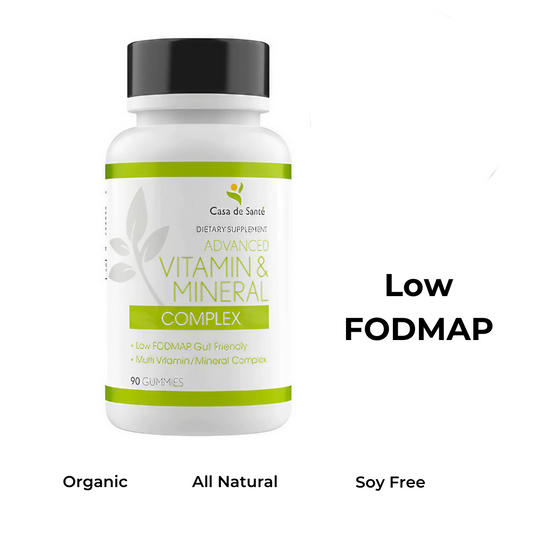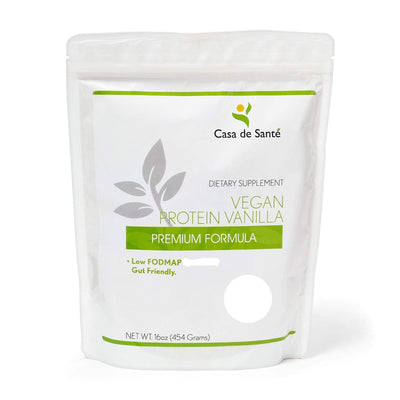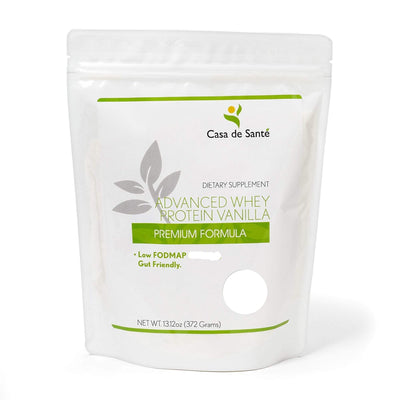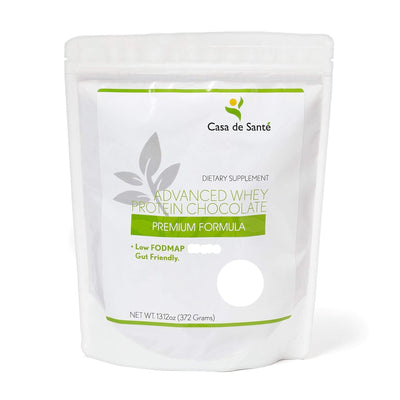Is Paraffin Gluten Free
Is Paraffin Gluten Free
Paraffin is a commonly used substance in various industries, known for its versatile properties. However, many people are concerned about its gluten content, especially those following a gluten-free diet. In this article, we will delve into the world of paraffin, explore the concept of gluten-free, discuss the potential risks and benefits of using paraffin, and discover gluten-free alternatives to this substance.
Understanding Paraffin: A Brief Overview
Before we address the gluten-related concerns, let's start by understanding what paraffin actually is.
Paraffin is a waxy substance derived from petroleum, coal, or shale. It is a mixture of hydrocarbons that solidifies at room temperature and melts easily when heated. This unique property makes paraffin an ideal ingredient in a wide range of products.
Paraffin has been used for centuries due to its versatility and beneficial properties. Its origins can be traced back to the early 19th century when it was first discovered as a byproduct of the petroleum refining process. Since then, it has become an essential component in various industries.
What is Paraffin Used For?
Paraffin finds application in various industries, including cosmetics, candle-making, food packaging, and even pharmaceuticals. Its widespread use can be attributed to its numerous advantageous qualities.
In the cosmetics industry, paraffin is commonly used in moisturizers and lip balms. Its ability to form a protective barrier on the skin helps to lock in moisture, keeping the skin hydrated and preventing dryness. Additionally, paraffin's emollient properties make it an excellent choice for those with sensitive or dry skin.
When it comes to candle-making, paraffin is a popular choice due to its low cost and ease of use. It has a low melting point, allowing it to be easily melted and poured into molds. The resulting candles have a smooth and consistent texture, and they burn evenly, providing a long-lasting and pleasant aroma.
Paraffin also plays a crucial role in the food packaging industry. It is commonly used as a coating for food products, such as fruits and vegetables, to enhance their appearance and prolong their shelf life. The thin layer of paraffin acts as a barrier, preventing moisture loss and inhibiting the growth of bacteria and fungi.
Furthermore, paraffin finds its way into the pharmaceutical industry. It is used as a coating for pills, ensuring their integrity and preventing them from sticking together. This coating also helps to mask any unpleasant taste or odor associated with certain medications, making them easier to swallow.
Overall, paraffin's ability to provide moisture retention, improve shelf life, and enhance the quality of various products makes it a versatile and valuable ingredient in numerous industries.
The Gluten-Free Concept
Now that we have a basic understanding of paraffin, let's shift our focus to the concept of gluten-free and why it matters to certain individuals.
Gluten is a protein found in wheat, barley, rye, and their derivatives. It gives elasticity to dough and helps maintain the shape of various baked goods. For individuals with celiac disease or gluten sensitivities, consuming gluten can lead to adverse health effects.
But what exactly is celiac disease? Celiac disease is an autoimmune disorder where the ingestion of gluten causes damage to the small intestine. This damage prevents the absorption of nutrients and can lead to a variety of symptoms such as diarrhea, weight loss, and fatigue. It is estimated that about 1% of the global population has celiac disease, making it a relatively common condition.
Aside from celiac disease, there are also individuals who have gluten sensitivities or wheat allergies. While not as severe as celiac disease, these conditions can still cause discomfort and adverse reactions when gluten is consumed. Symptoms may include bloating, abdominal pain, and skin rashes.
So why is a gluten-free diet so important for these individuals? Eliminating gluten from their diet is vital to prevent digestive issues, inflammation, and other related symptoms. By avoiding gluten, individuals with celiac disease can allow their small intestine to heal and improve their overall health. For those with gluten sensitivities or wheat allergies, a gluten-free diet can help alleviate discomfort and improve their quality of life.
It's worth noting that following a gluten-free diet can be challenging, as gluten is found in many common foods such as bread, pasta, and pastries. However, there are now numerous gluten-free alternatives available in the market, making it easier for individuals to adhere to their dietary restrictions without sacrificing taste or variety.
Furthermore, the gluten-free movement has gained significant popularity in recent years, not only among those with gluten-related conditions but also among individuals looking to improve their overall health. Some people believe that a gluten-free diet can help with weight loss, boost energy levels, and improve digestion, although scientific evidence supporting these claims is limited.
In conclusion, the gluten-free concept is of utmost importance to individuals with celiac disease, gluten sensitivities, or wheat allergies. By eliminating gluten from their diet, they can prevent adverse health effects and improve their overall well-being. While following a gluten-free diet may present challenges, the availability of gluten-free alternatives and the growing awareness surrounding gluten-related conditions have made it easier for individuals to embrace this lifestyle.
Paraffin and Gluten: The Connection
Now, let's explore whether paraffin contains gluten or if it poses any risk to those following a gluten-free lifestyle.
The Composition of Paraffin
Paraffin is predominantly composed of long-chain hydrocarbons, making it chemically distinct from gluten. It does not contain gluten proteins that are responsible for gluten-related reactions in susceptible individuals.
Paraffin, also known as petroleum wax, is a white or colorless solid derived from crude oil. It is a byproduct of the petroleum refining process and is commonly used in various industries, including cosmetics, pharmaceuticals, and food packaging.
The long-chain hydrocarbons in paraffin are primarily made up of carbon and hydrogen atoms. These hydrocarbons have a straight, linear structure, which gives paraffin its characteristic properties, such as its low melting point and high flammability.
Paraffin is often used as a coating or sealing agent due to its water-repellent properties. It forms a protective barrier that helps to prevent moisture loss and maintain the freshness of products.
Is There Gluten in Paraffin?
Since paraffin is derived from mineral sources, it is naturally gluten-free. The refining process involved in obtaining paraffin removes any potential traces of gluten that may be present in the raw materials.
Gluten, on the other hand, is a mixture of proteins found in wheat, barley, and rye. It is responsible for the elastic texture of dough and gives structure to baked goods. Gluten can trigger an immune response in individuals with celiac disease or gluten sensitivity, leading to various digestive symptoms and long-term health complications.
Due to the distinct sources and compositions of paraffin and gluten, there is no risk of gluten contamination in paraffin-based products. People following a gluten-free lifestyle can safely use products that contain paraffin without worrying about gluten-related reactions.
It is important to note that while paraffin itself does not contain gluten, it is always advisable to check the ingredient labels of products to ensure that they are free from any potential gluten-containing additives or cross-contamination during manufacturing.
Potential Risks and Benefits of Paraffin
Having clarified the gluten aspect, let's now consider the potential risks and benefits associated with using paraffin.
Paraffin, a widely used substance in various industries, offers both advantages and potential risks. It is important to understand the health implications and benefits of using paraffin to make informed decisions.
Health Implications of Paraffin
When used in moderation and as intended, paraffin is generally considered safe. However, it is crucial to be aware of the potential health risks associated with prolonged inhalation or ingestion of paraffin vapors or products.
One of the primary concerns with paraffin is its potential for respiratory irritation. Prolonged exposure to paraffin vapors may lead to respiratory issues, such as coughing, wheezing, or shortness of breath. It is important to follow safety guidelines provided by manufacturers to minimize the risk of respiratory problems.
Ingesting paraffin can also have adverse effects on health. Although accidental ingestion is rare, it can occur, especially in children. Swallowing paraffin may cause gastrointestinal discomfort, such as nausea, vomiting, or diarrhea. If ingestion occurs, seeking immediate medical attention is recommended.
It is always advisable to consult with a healthcare professional or seek professional advice if you have concerns about using paraffin or if you experience any adverse health effects.
Advantages of Using Paraffin
Despite the potential risks, paraffin offers numerous advantages in various industries, making it a popular choice for various applications.
One of the significant benefits of paraffin is its moisture-retention properties, which make it an effective emollient in skincare products. Paraffin-based creams and lotions help lock in moisture, keeping the skin hydrated and preventing dryness. This makes it particularly beneficial for individuals with dry or sensitive skin.
Paraffin's low melting point is another advantage that makes it convenient for candle-making. The wax melts easily and evenly, allowing for a smooth and consistent burn. Additionally, paraffin wax can hold a high fragrance load, resulting in candles that release pleasant scents when lit.
Furthermore, paraffin's inert nature and stability contribute to its popularity in food packaging. It helps create a protective barrier, preventing moisture loss and maintaining the freshness of food products. This makes it an ideal choice for packaging items such as chocolates, snacks, and baked goods.
It is important to note that while paraffin offers these advantages, it is essential to use it responsibly and follow safety guidelines to minimize any potential risks.
Gluten-Free Alternatives to Paraffin
For individuals who prefer to avoid paraffin or are seeking gluten-free alternatives, there are several natural substitutes available.
Paraffin, a petroleum-based wax commonly used in various industries, has been a go-to choice for many. However, with the growing awareness of gluten sensitivities and the desire for more sustainable options, people are now looking for alternatives that are both gluten-free and eco-friendly.
Natural Substitutes for Paraffin
Beeswax, a natural wax produced by bees, is one of the most popular alternatives to paraffin. Not only is it gluten-free, but it also offers a delightful honey scent and a warm, golden color. Beeswax candles have a long burn time and emit a natural, soothing light.
Soy wax, derived from soybean oil, is another excellent choice. It is a renewable resource and burns cleaner than paraffin, releasing fewer toxins into the air. Soy wax candles come in a variety of scents and colors, making them a versatile option for any occasion.
Palm wax, made from palm oil, is yet another viable alternative. It is known for its beautiful crystalline structure, which gives candles a unique and elegant appearance. Palm wax candles burn evenly and have a long-lasting fragrance.
These waxes not only provide a gluten-free option but also offer similar characteristics to paraffin, such as meltability and moisturizing properties. They are versatile and can be used for various purposes, including candle making, cosmetics, and even as a natural sealant for food containers.
How to Choose a Gluten-Free Alternative
When selecting a gluten-free alternative to paraffin, there are several factors to consider. Firstly, think about the intended usage. If you are making candles, you may want to choose a wax that has a long burn time and emits a pleasant scent. On the other hand, if you are using the wax for cosmetic purposes, you might prioritize its moisturizing properties.
Personal preferences also play a significant role. Some people enjoy the natural scent of beeswax, while others prefer the versatility of soy wax or the unique appearance of palm wax. It's essential to choose a wax that aligns with your preferences and enhances your overall experience.
Ethical considerations are also crucial when selecting a gluten-free alternative. Beeswax, for example, supports beekeepers and promotes the health of bee populations. Soy wax promotes sustainable agriculture and reduces our dependence on fossil fuels. Palm wax, when sourced responsibly, helps support local communities and protects valuable rainforest ecosystems.
Conducting thorough research and consulting with professionals can help you find suitable options tailored to your specific needs. Whether you are a candle enthusiast, a DIY skincare enthusiast, or simply someone looking for gluten-free alternatives, there is a natural substitute for paraffin that will meet your requirements.
In conclusion, paraffin is gluten-free and does not pose a risk to individuals following a gluten-free diet. However, it is essential to be aware of potential health implications associated with paraffin use and to explore alternative options if desired. By understanding the properties of paraffin and gluten-free alternatives, individuals can make informed choices that align with their dietary and lifestyle preferences.








